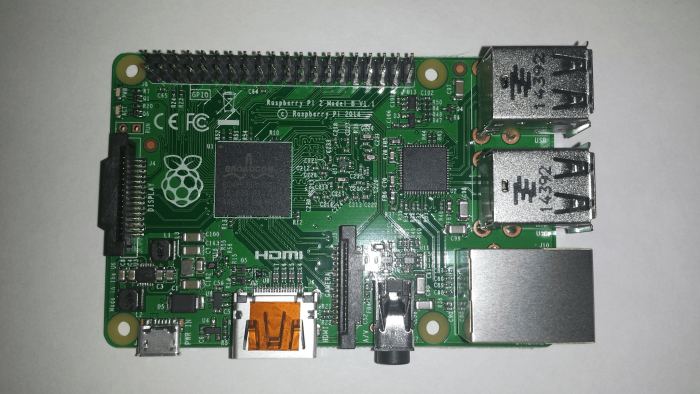Last Updated on December 24, 2022
Introduction / Hardware
The latest chapter of the Raspberry Pi promises so much, but does it deliver? The Raspberry Pi is a series of credit-card sized single-board computers. The original Raspberry Pi was acclaimed by some reviewers as a desktop PC replacement. The reality was vastly different. With a single core CPU and a 256MB dollop of RAM it was honestly too slow for many typical desktop tasks. It was never a desktop replacement after all. The Raspberry Pi’s creators, the Raspberry Pi Foundation, wanted to spark children’s interest in computer programming and encourage students to apply for computing degrees. The original Pi, and its later incarnation with 512MB RAM have been a runaway success, selling 5 million units. The charitable foundation has used the proceeds from the project to train teachers, supply educational resources, and fund numerous open source projects.
The new Raspberry Pi 2 proclaims that it is 6x faster than the original Pi, taking the original machine to a new level. The big leaps focus on the processor and memory, with the machine now replacing a single core CPU with a quad core Broadcom BCM2836 CPU. The RAM has jumped to a very respectable 1GB.
I purchased the Raspberry Pi from Element 14. Contained in the small box is the credit card sized board, and a quick start guide & safety instruction manual. Nothing else! You will need other items to get started of course. After connecting an HDMI cable, ethernet cable, wireless keyboard and mouse, power lead, and installing Raspbian (using the simple to use NOOBS installer) on a spare Micro SD card, I was ready to see if the Pi 2 is a massive leap forwards, or an incremental improvement.

Specifications (Generation 2 Model B) at a glance
| CPU: | Quad-core ARM Cortex-A7 running at 900MHz |
| RAM: | 1 GB LPDDR2 SDRAM (shared with GPU) |
| Storage: | MicroSD slot |
| Graphics | Broadcom VideoCore IV 3D graphics core |
| Screen: | Full size HDMI (rev 1.3 & 1.4) |
| Audio: | HDMI, 3.5mm audio port |
| Ports: | 4 USB, 4 pole Stereo output and Composite video port, CSI camera port, & DSI display port, Micro SD card slot, 10/100 Ethernet, 17x GPIO, HAT ID bus |
| Size: | 85.60mm x 56.50mm |
| Power: | 4W (idle), 5W (peak) |
| Weight: | 45g |
Like the original Pi, the Pi 2 does not offer onboard wireless or Bluetooth built in. Their omission helps to keep the costs of the board down, but with 4 USB ports this should not cause users too many problems.
There were a few quirks — a multicoloured square (when the machine wasn’t getting enough voltage), and black bars on the screen (editing the /boot/config.txt file fixed this). But this aside, the Raspberry Pi 2 felt remarkably like a standard Linux box in feel and appearance.
Next Page: Benchmarks
Read ahead
1. Introduction
2. Benchmarks
3. Software
4. Summary